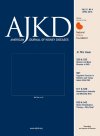Pathophysiology and Management of Hyperoxaluria and Oxalate Nephropathy: A Review
Hyperoxaluria results from either inherited disorders of glyoxylate metabolism leading to hepatic oxalate overproduction (primary hyperoxaluria), or increased intestinal oxalate absorption (secondary hyperoxaluria). Hyperoxaluria may lead to urinary supersaturation of calcium oxalate and crystal formation, causing urolithiasis and deposition of calcium oxalate crystals in the kidney parenchyma, a condition termed oxalate nephropathy. Considerable progress has been made in the understanding of pathophysiological mechanisms leading to hyperoxaluria and oxalate nephropathy, whose diagnosis is frequently delayed and prognosis too often poor.



